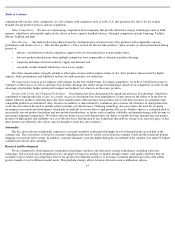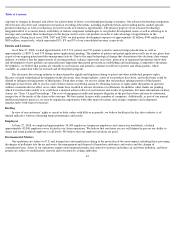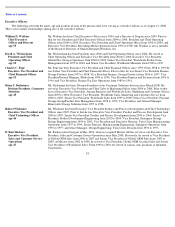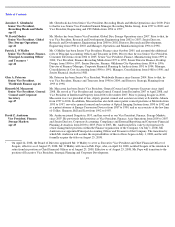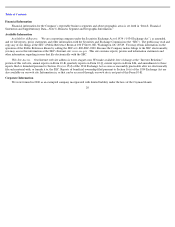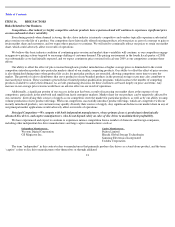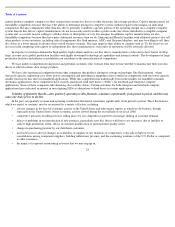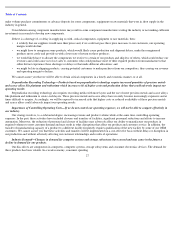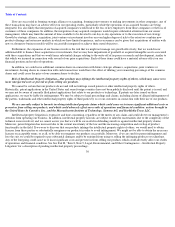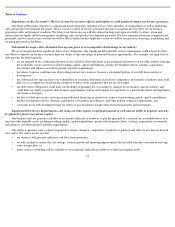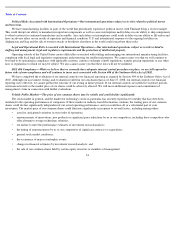Seagate 2007 Annual Report Download - page 26
Download and view the complete annual report
Please find page 26 of the 2007 Seagate annual report below. You can navigate through the pages in the report by either clicking on the pages listed below, or by using the keyword search tool below to find specific information within the annual report.
Table of Contents
•
our inability to reduce our fixed costs to match sales in any quarter because of our vertical manufacturing strategy, which means that
we make more capital investments than we would if we were not vertically integrated;
•
dependence on our ability to successfully qualify, manufacture and sell in increasing volumes on a cost-effective basis and with
acceptable quality our disc drive products, particularly the new disc drive products with lower cost structures;
•
variations in the cost of components for our products, especially in view of the U.S. dollar
’
s continued weakness as compared to other
currencies;
•
uncertainty in the amount of purchases from our distributor customers who from time to time constitute a large portion of our total
sales;
•
our product mix and the related margins of the various products;
•
accelerated reduction in the price of our disc drives due to technological advances and/or an oversupply of disc drives in the market, a
condition that is exacerbated when the industry is served by multiple suppliers and shifting trends in demand which can create supply
demand imbalances;
•
manufacturing delays or interruptions, particularly at our major manufacturing facilities in China, Malaysia, Singapore or Thailand;
•
limited access to components that we obtain from a single or a limited number of suppliers;
•
the impact of changes in foreign currency exchange rates on the cost of producing our products and the effective price of our products
to foreign consumers; and
Importance of Time-to-Market—Our operating results may depend on our being among the first-to-market and achieving sufficient
production volume with our new products.
•
operational issues arising out of the increasingly automated nature of our manufacturing processes.
To achieve consistent success with our OEM customers, it is important that we be an early provider of new types of disc drives featuring
leading, high-quality technology and lower per gigabyte storage cost. Historically, our operating results have substantially depended upon our
ability to be among the first-to-market with new product offerings. Our market share and operating results in the future may be adversely
affected if we fail to:
•
consistently maintain our time
-
to
-
market performance with our new products;
•
produce these products in sufficient volume;
•
qualify these products with key customers on a timely basis by meeting our customers
’
performance and quality specifications; or
If delivery of our products is delayed, our OEM customers may use our competitors’ products to meet their production requirements. If the
delay of our products causes delivery of those OEMs’ computer systems into which our products are integrated to be delayed, consumers and
businesses may purchase comparable products from the OEMs’ competitors.
Moreover, we face the related risk that consumers and businesses may wait to make their purchases if they want to buy a new product that
has been shipped or announced but not yet released. If this were to occur, we may be unable to sell our existing inventory of products that may
be less efficient and cost effective compared to new products. As a result, even if we are among the first-to-market with a given product,
subsequent introductions or announcements by our competitors of new products could cause us to lose revenue and not achieve a positive return
on our investment in existing products and inventory.
25
•
achieve acceptable manufacturing yields, quality and costs with these products.


